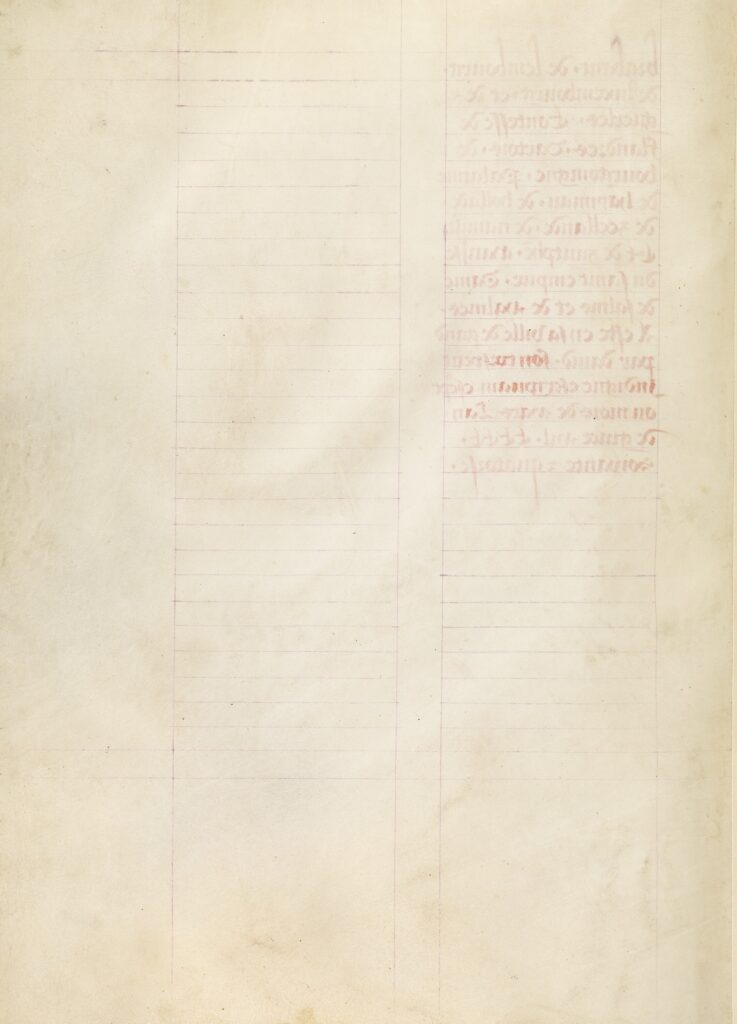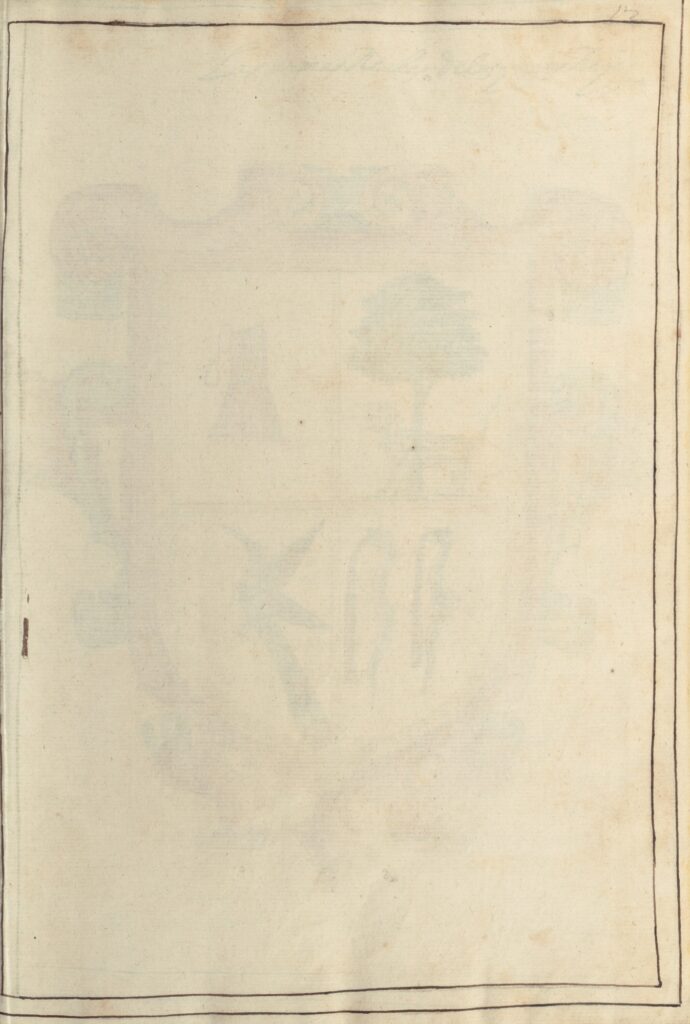
I was unexpectedly giddy when Carolina Miranda posted on social media about the blank ruled page she came across in the collection of the Getty Museum.
I have since had tabs open for all the blank ruled pages in the Getty for several weeks now. There are fourteen. [Also there are 46 “blank pages,” which includes half-blank sheets.]
Though they are catalogued individually, they are bound elements of two manuscripts. Les Visions du chevalier Tondal is a c. 1475 Flemish illuminated manuscript telling a popular story of a knight’s supernatural journey through heaven and hell. It was commissioned from Simon Marmion and David Aubert by Margaret of York, the duchess of Burgundy. Of its 45 folios (sheets), nine are blank. The page above is the verso of the last page of the text, which is faintly visible on the upper right.

The other five blank ruled pages are more properly called blank bordered pages. They are part of the massive and extraordinary 400-folio Historia general del Piru. Completed in 1616 by friar Martín de Murúa, it is one of only three illustrated manuscripts on pre-conquest and early colonial Inca history. The Getty published an 800-pg facsimile edition in 2008.
When the Albertina’s collection of Dürer drawings came to the National Gallery, I got really into the inked borders the museum put around them. The idea that someone decided to draw on a Dürer drawing blew my mind. Here, of course, the freehand borders came first, to guide the script and illumination that would come.

The best blank page in the Historia is not actually blank; our scribe unloaded his quill in four swooping lines on the verso of folio 185, which also has a little monogram at the bottom.
